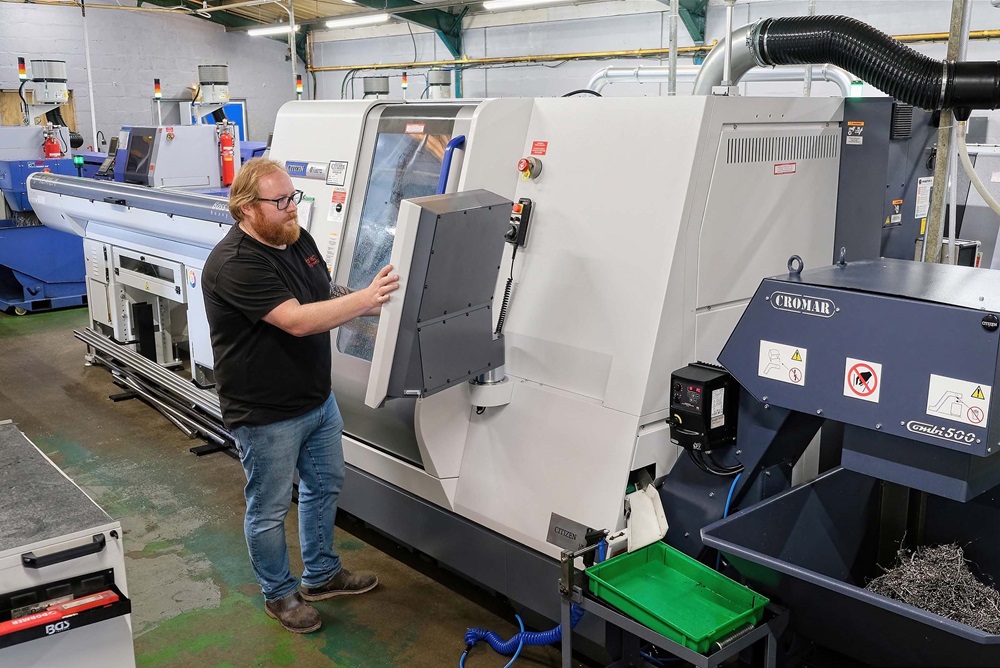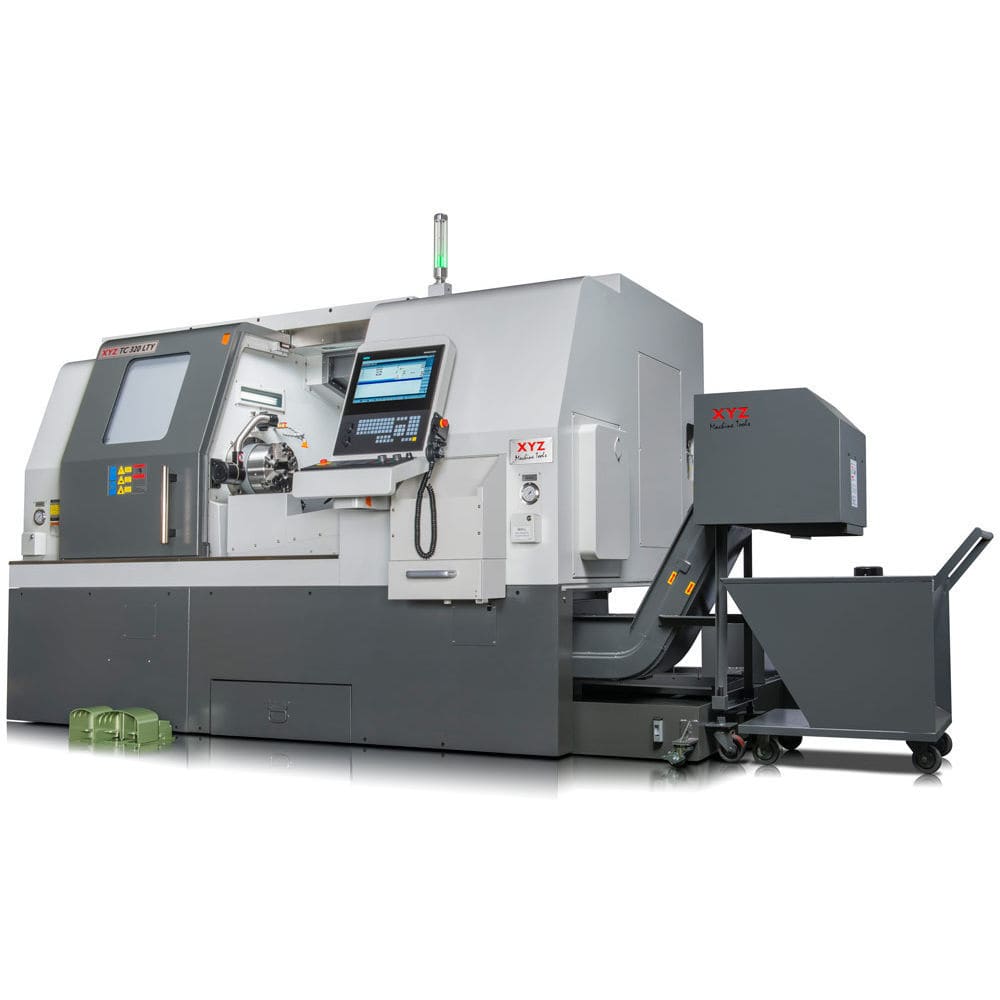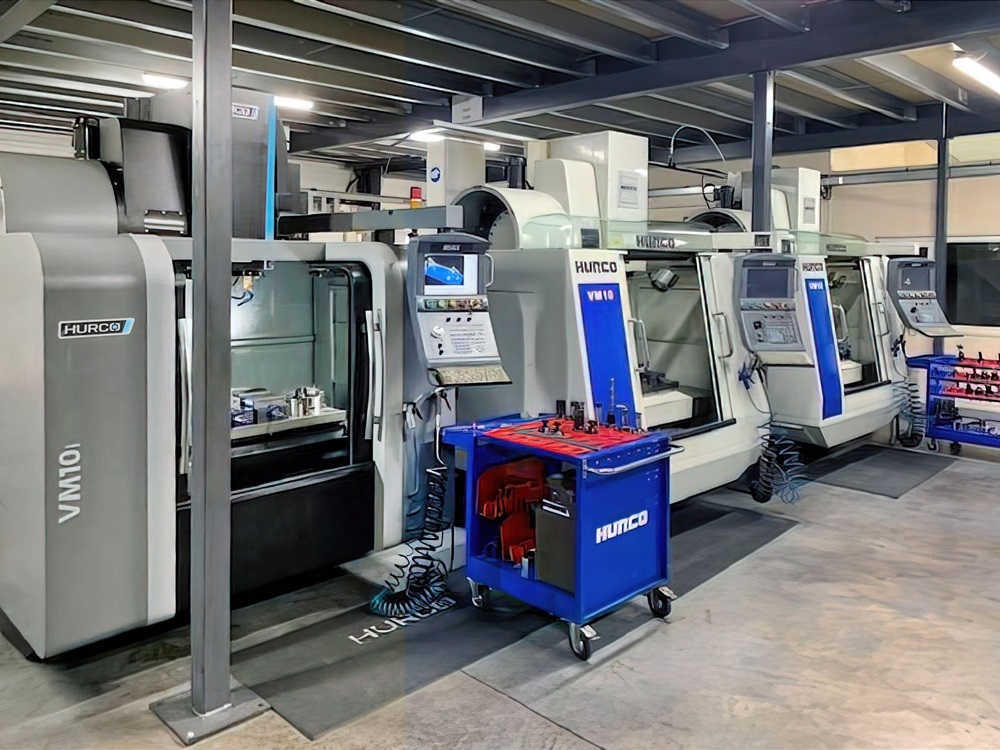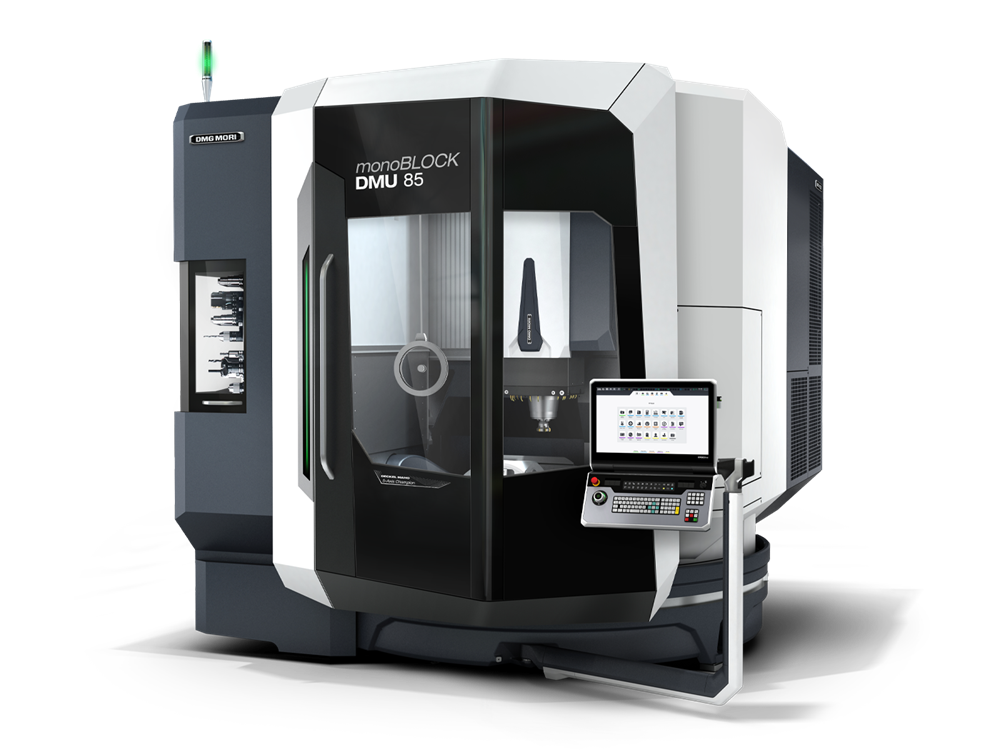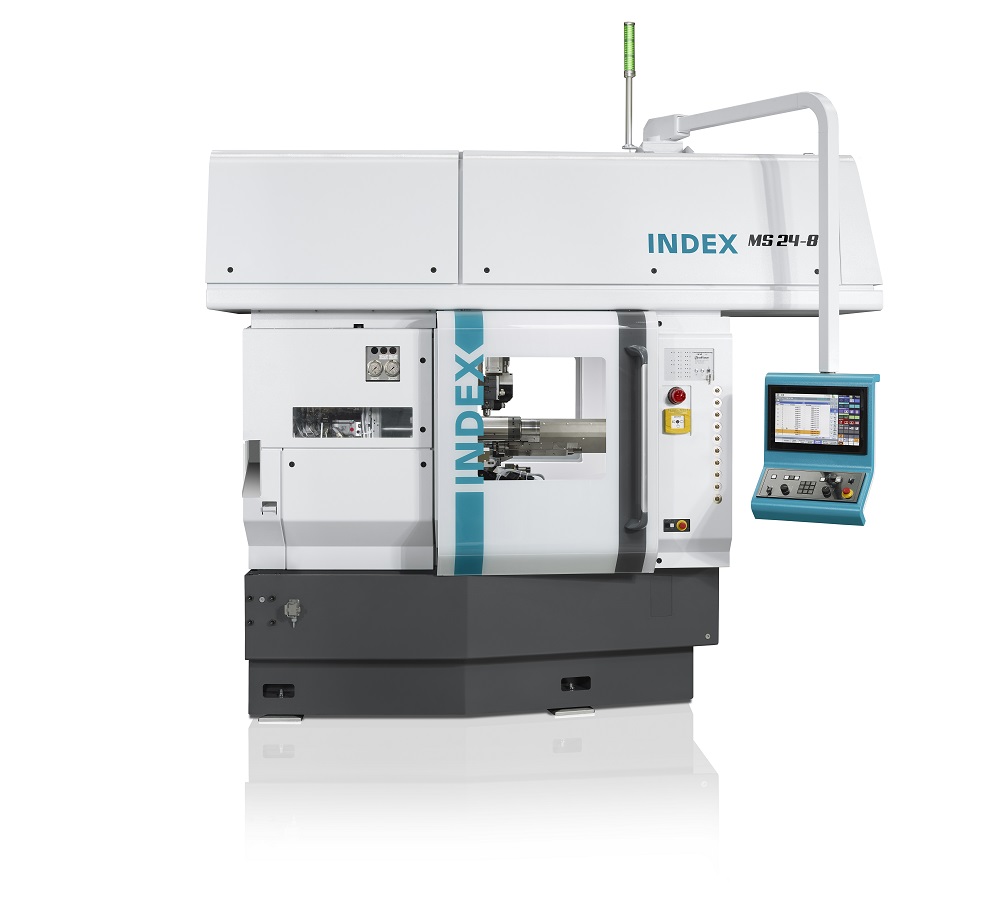Josh Watkins, director of Welsh subcontractor Harlech Engineering, has recently bought two
lathes from Citizen Machinery, a Miyano fixed-head model installed in mid-2023 and a
sliding-head Cincom one year later. Both benefit from the manufacturer’s LFV chip-breaking
software in the operating system of the Mitsubishi control, which he says has transformed
turning efficiency and productivity at his Swansea factory.
The twin-spindle, double Y-axis-turret Miyano ANX-42SYYLFV turning centre with 3 m bar
magazine replaced a slower, single-turret lathe of a different make. It resulted in
significantly higher productivity, both through faster cycle times and fewer operations,
usually producing components in one hit. It was, however, the LFV software that set the
machine apart from a couple of similarly specified lathes on the market that Watkins was
also considering. 316 stainless steel accounts for more than 75% of work going through
Harlech’s shop floor.
“Historically, we’ve used two other types of chip-breaking software on sliding-head lathes,
but Citizen’s LFV is more effective than either. The function is easy to incorporate into a
cycle, as it only requires a single line of G-code to switch it on or off. Moreover, the starting
parameters suggested in Citizen’s offline Alkart Wizard software are normally near-perfect,
so there’s little trial and error involved.”
By mid-2024 it was apparent that, with business holding up strongly, more sliding-head
lathe capacity was required at the Swansea facility. A 32 mm bar machine was needed to
fulfil the largest possible range of work. As Citizen’s Cincom L32-XLFV also benefits from the
chip-breaking software, it was the obvious choice to bring the subcontractor’s tally of
sliding-head lathes to eight, the other seven being of a different brand.
More information www.citizenmachinery.co.uk






